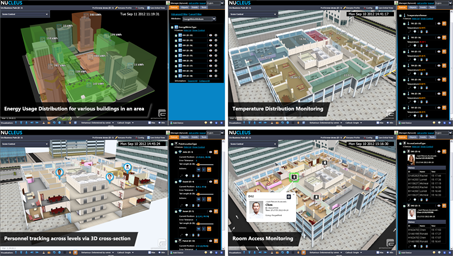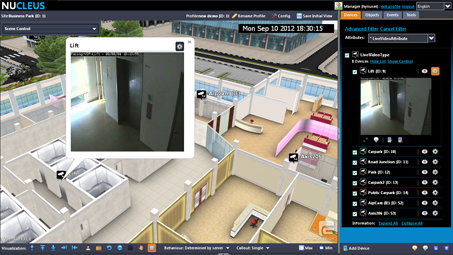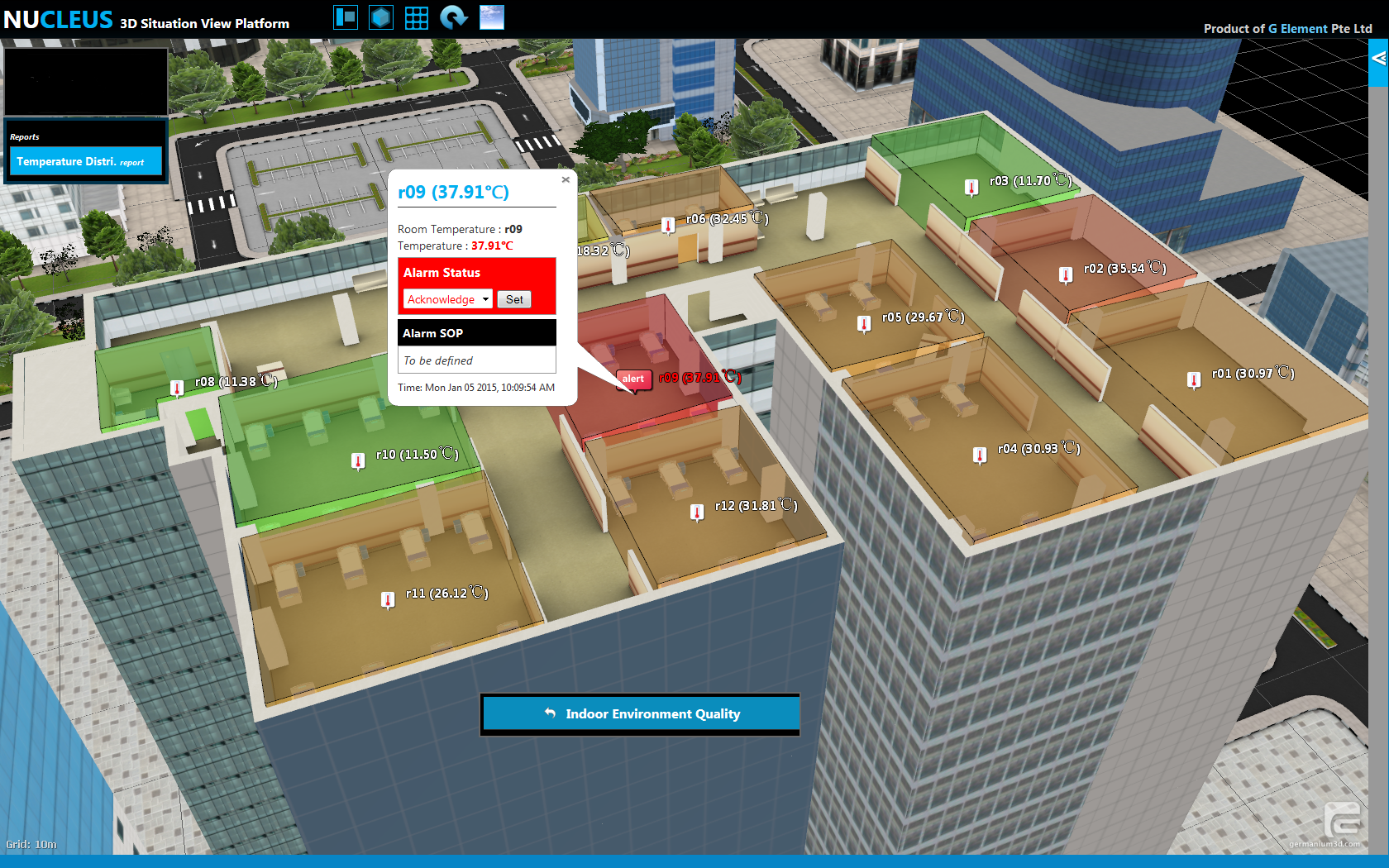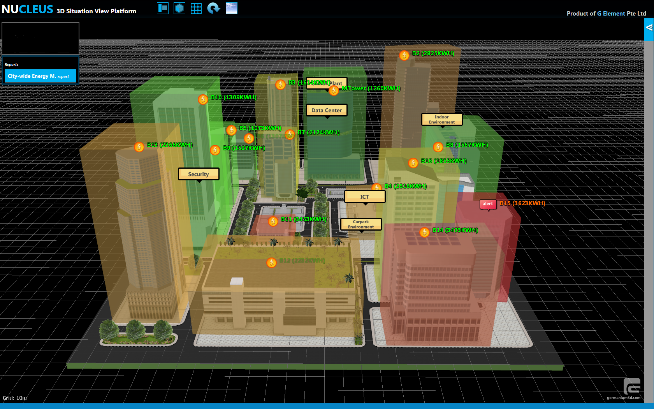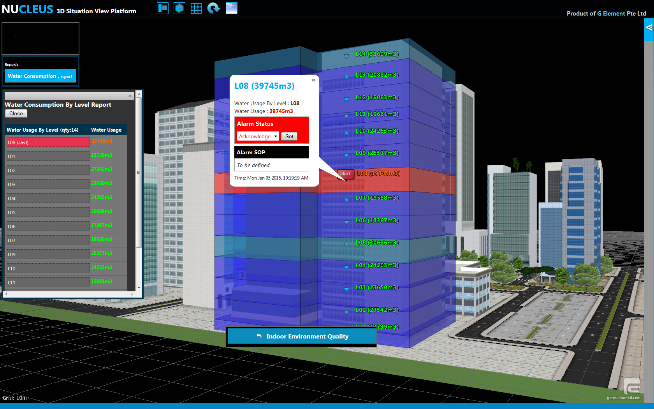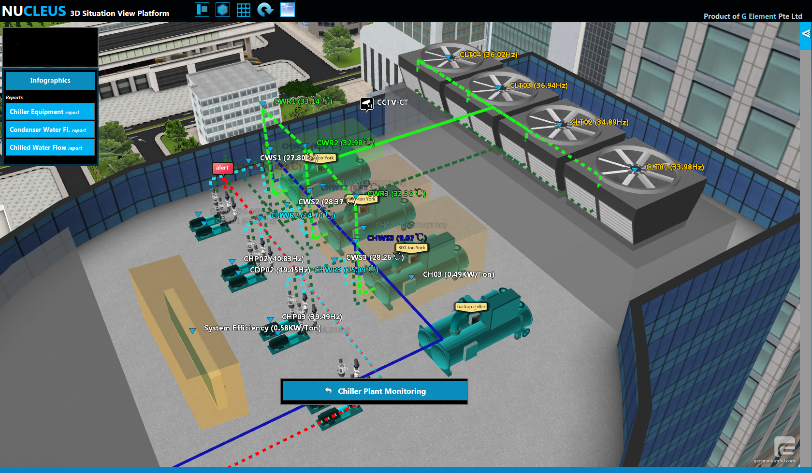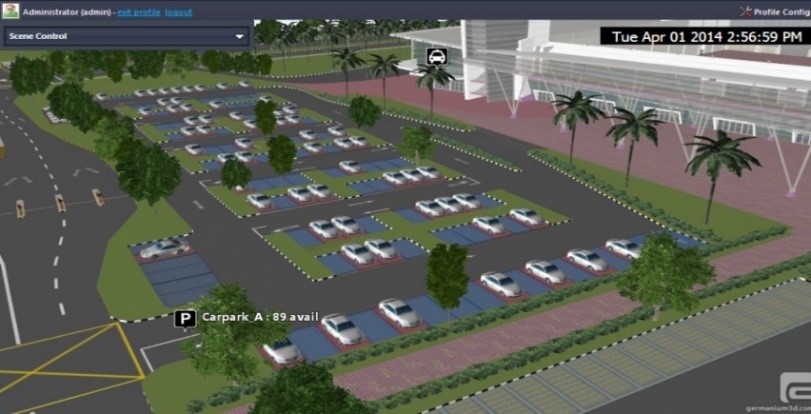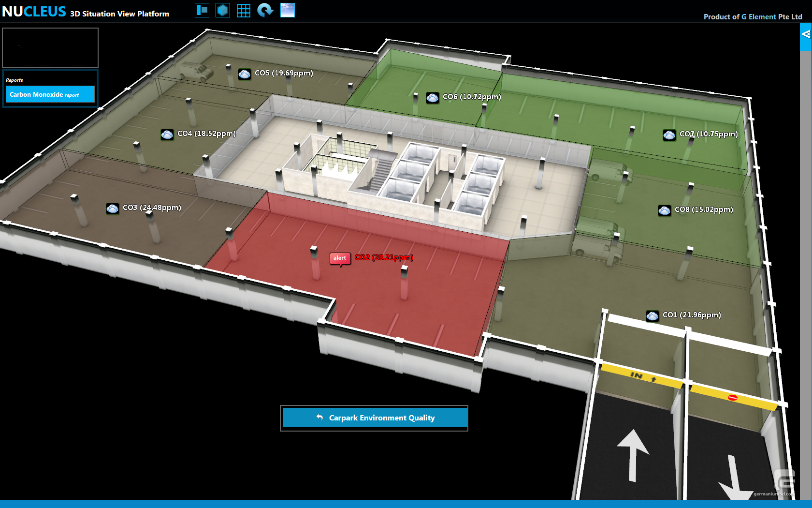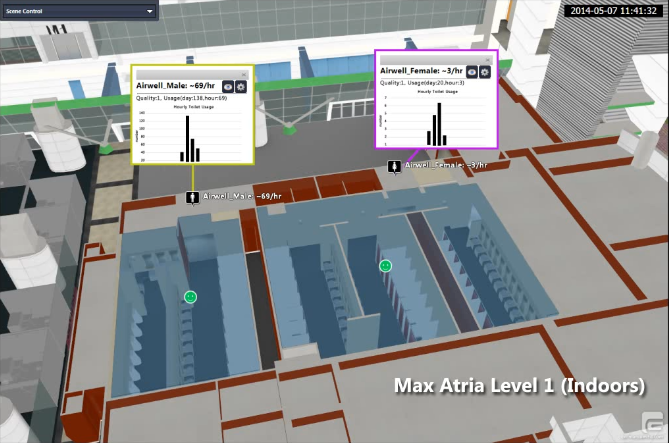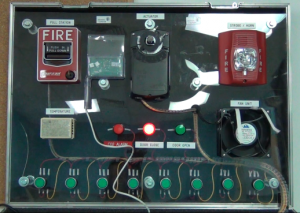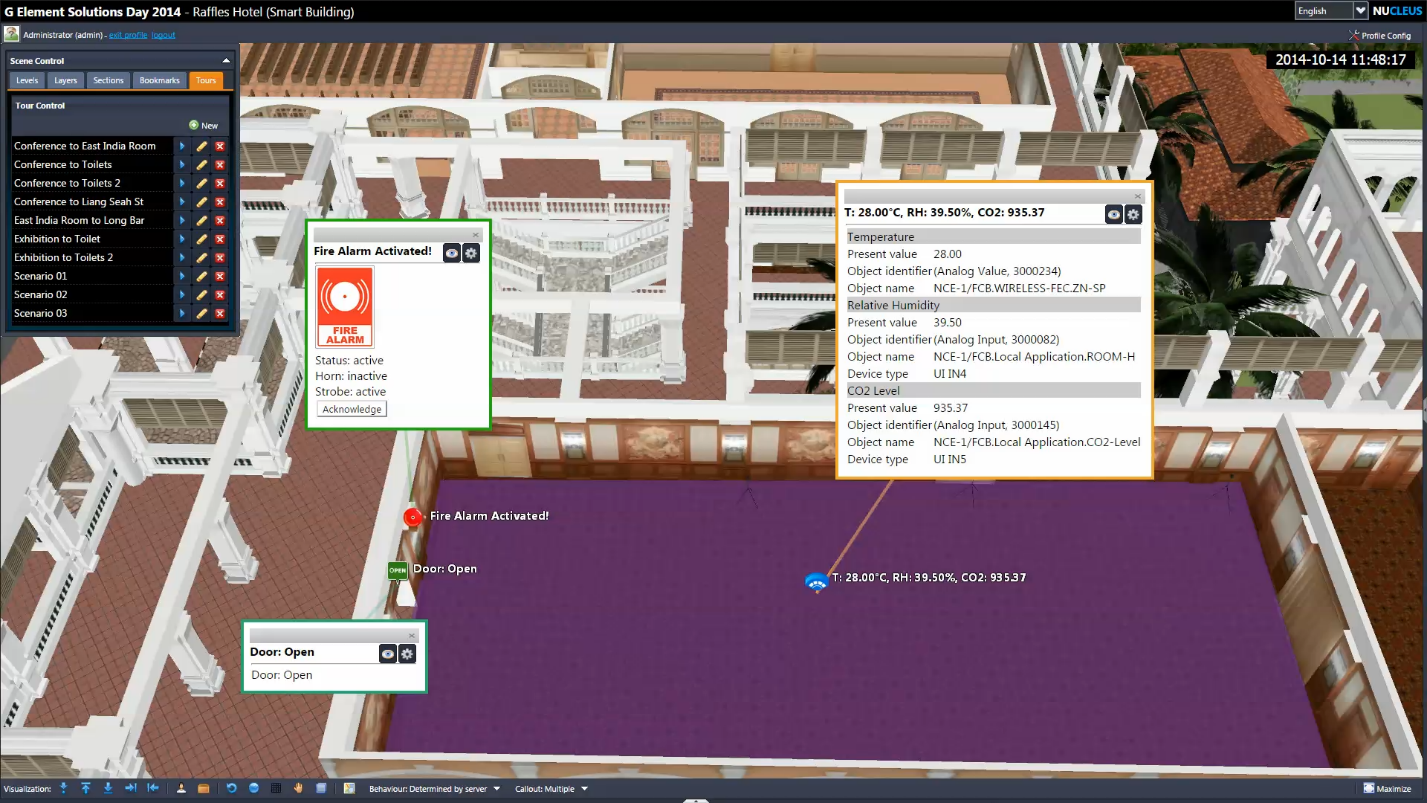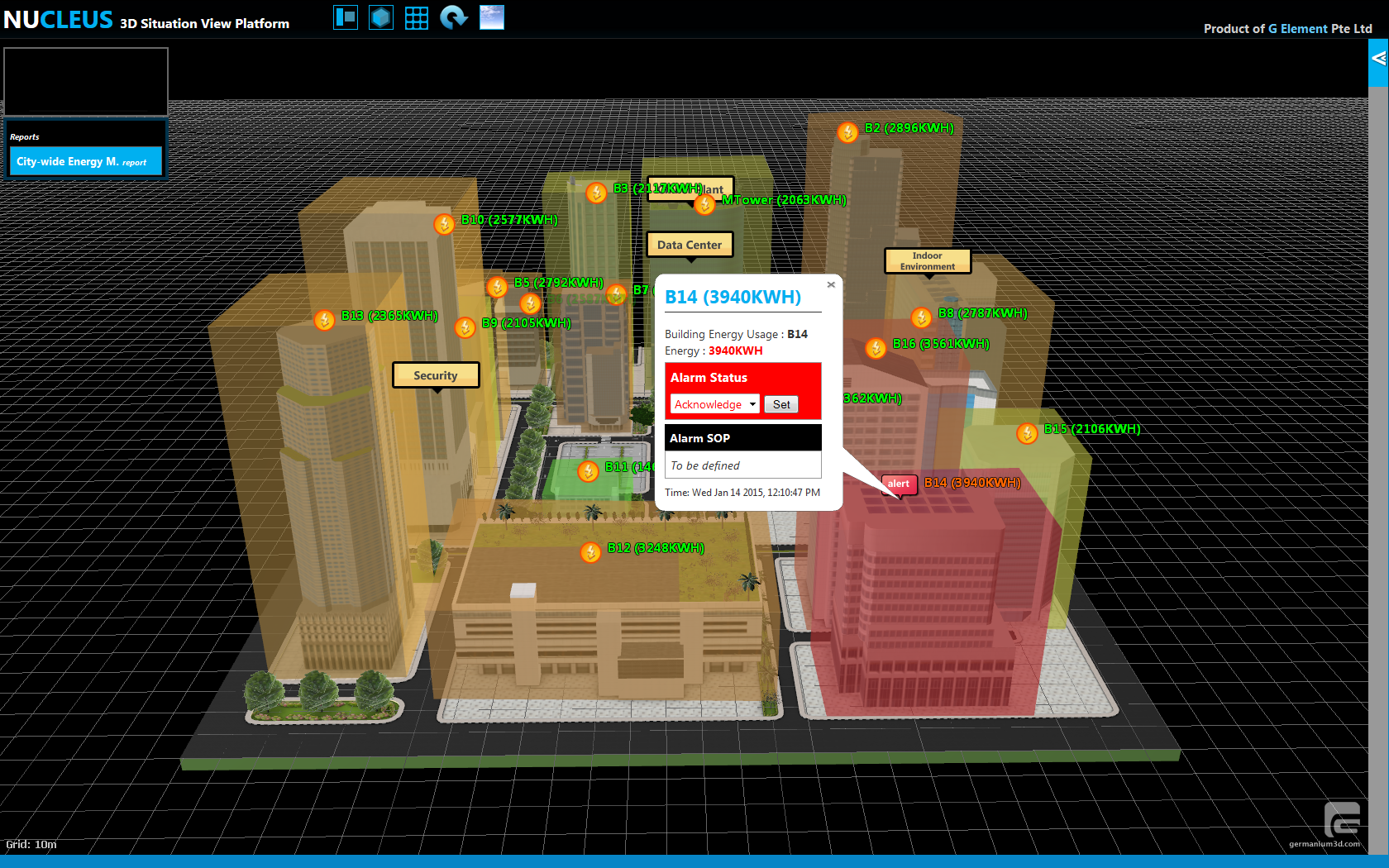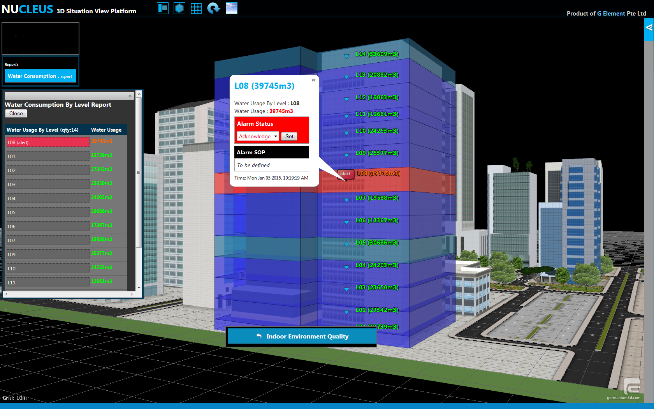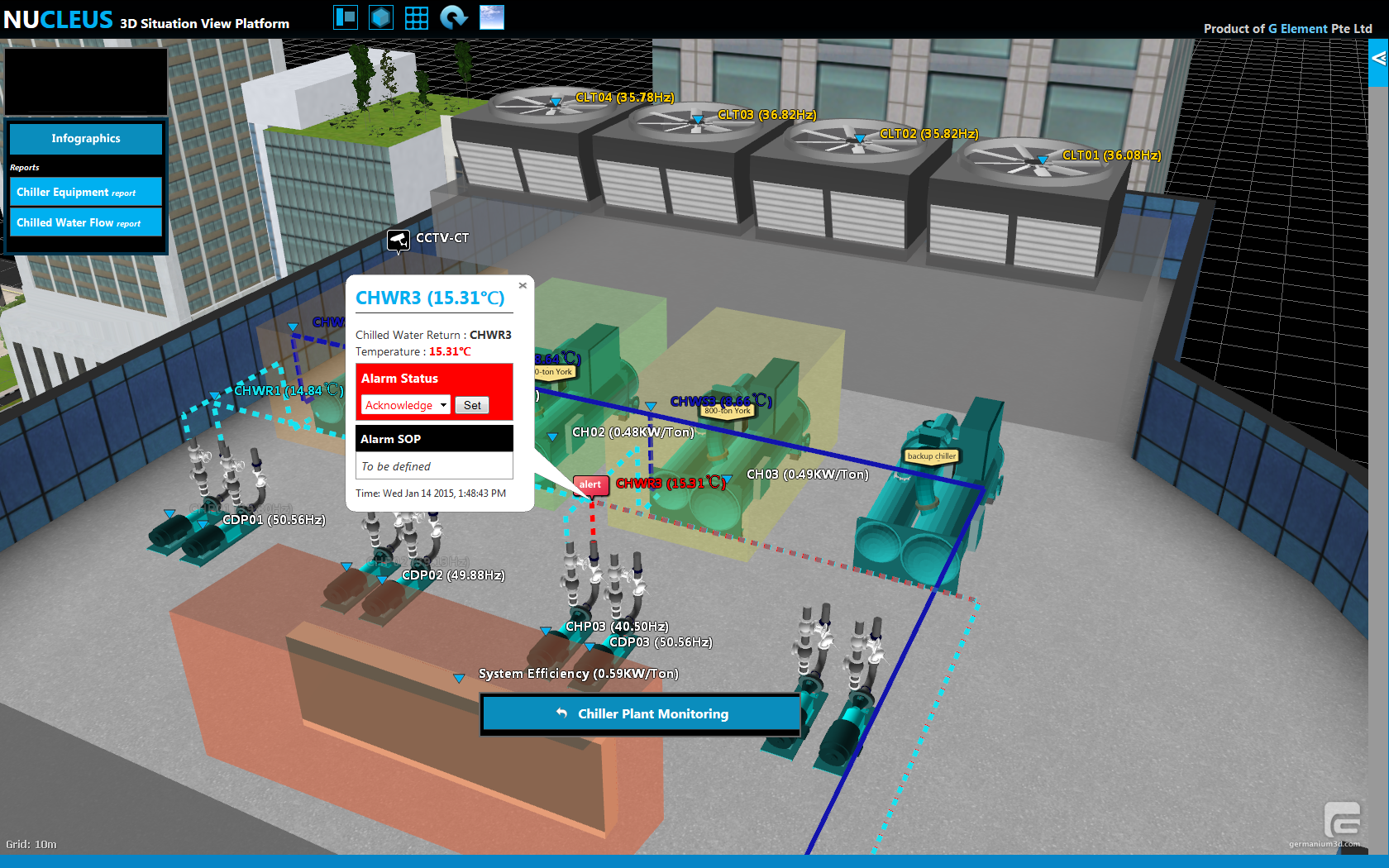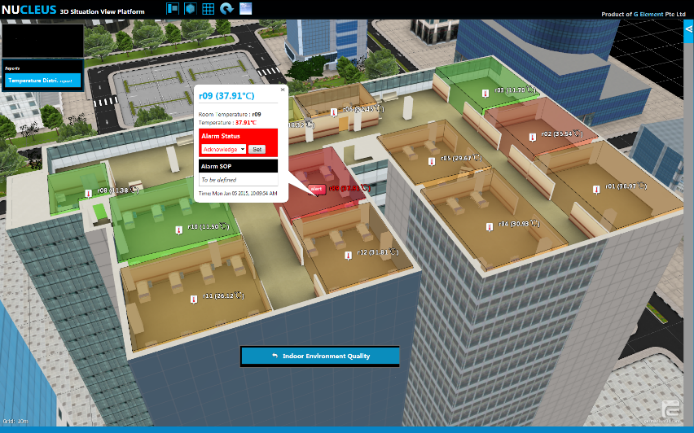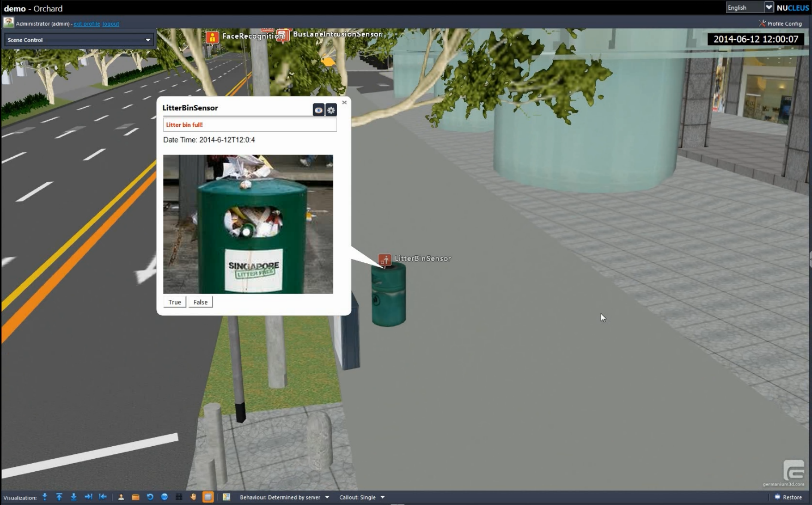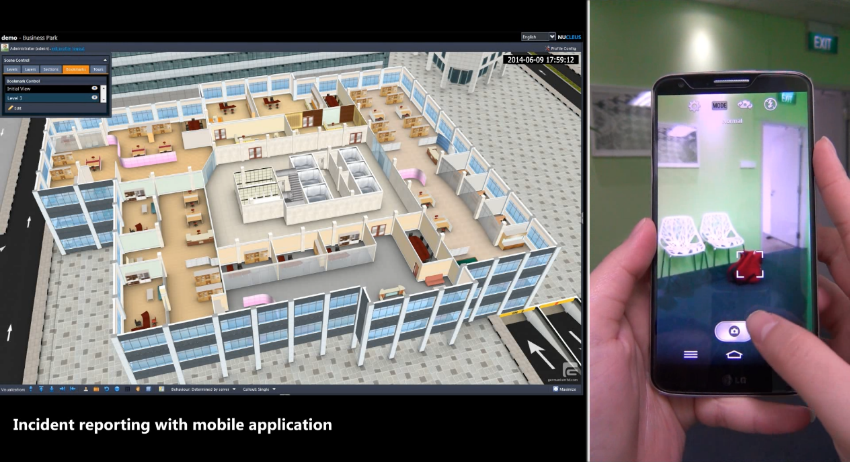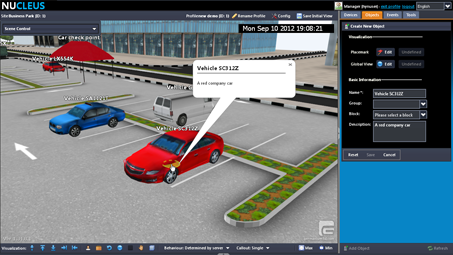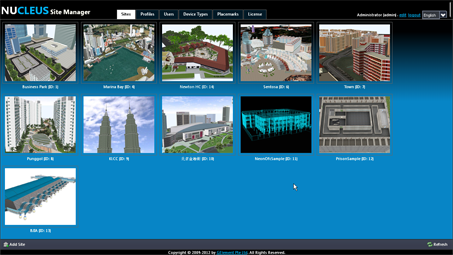According to the United States EPA (Environmental Protection Agency), intelligent green buildings can reduce energy usage by up to 70%. With more buildings incorporating intelligent sensors and technologies to help maximize building efficiency, building managers are looking at converged building solutions to help unify the individual sub-systems and manage the slew of sensors for greater ROI.
NUCLEUS fuses data from multiple sub-systems with the building’s 3D model, giving you an all-in-one unified management system。
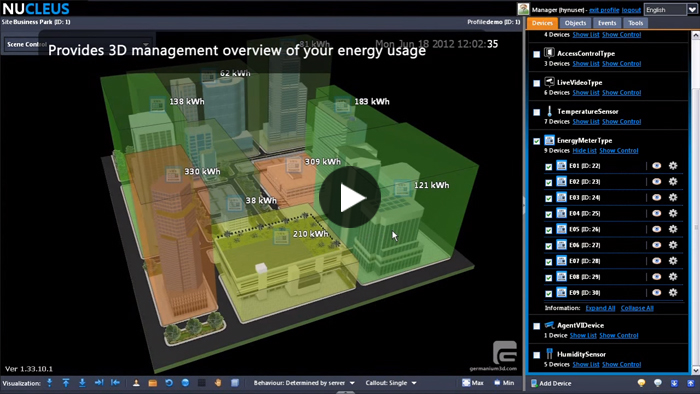
Capable of full integration with OPC-based and BACNET-based sub-systems, NUCLEUS can be integrated with the following systems:
- > Temperature Sub-system Management Interface (Indoor temperature distribution monitoring)
- > Chiller Plant Sub-system Management Interface
- > Energy Usage Sub-system Management Interface (City wide & per level building monitoring)
- > 空气质量子系统管理界面
- > Water Sub-system Management Interface
- > 照明子系统管理界面
- > 设施子系统管理界面
- > 网络子系统管理界面
- > 火灾警报子系统的管理界面
- > 综合警报管理界面
Waste bins can also be monitored so that in the event waste overflows and is detected around the bin instead of in the bin, on-demand cleaning services will be engaged to clear the bins.
In tandem with the indoor environment quality monitoring, Metasys® Network Control Engine also works with the fire alarm sub-systems. For example, a spike in carbon dioxide levels accompanied by positive readings from smoke sensor that has a laser-based photoelectronic sensing chamber triggers an alert in NUCLEUS, alerting the building managers with a very intelligent early warning (VIEW) to a possible fire emergency. In the event that the actual fire alarm has been activated, the alarm status will be shown in NUCLEUS, and emergency lighting and pathway guidance systems will be activated, unlocking all exit doors for emergency evacuation, and ventilation will be set to safety mode.
Incorporated with an alert system, NUCLEUS alerts building managers when unusual behavior is detected for indoor environment monitoring, e.g. power outage triggering an alert. This active alert system eliminates the need for constant monitoring. With the location based information, building managers can quickly pin point the problem and the extent of area affected.
NUCLEUS’s ability to monitor devices, facilities and equipment information allowed building managers to easily browse and query maintenance records and manufacturer information from the 3D view. Incorporated with location based information, when any system has problem, e.g. power outage, building managers can quickly pin point location of source of fault so that rectification measures can be taken immediately, reducing the system’s down time.
NUCLEUS integration with smart sensors helps building managers to optimize manpower resource. For example, tasks such as washroom cleaning are scheduled with redundancy. By integrating NUCLEUS with air-quality sensor to track levels of ammonia in the washrooms, cleaning services can be triggered on-demand only when ammonia levels reaches undesirable levels, hence optimizing manpower while maintaining the same level of washroom cleanliness.
Waste bins can also be monitored so that in the event waste overflows and is detected around the bin instead of in the bin, on-demand cleaning services will be engaged to clear the bins.
NUCLEUS integration with smart sensors helps improve visitors’ experience at a premise. For example, by integrating NUCLEUS with car park slot sensors and CCTV video analytics, drivers can utilize the smart parking system to locate the nearest available car park slots, hence reducing cruising time.
NUCLEUS features an incident reporting function which allows anyone with a camera able mobile phone to become an information provider. Passerby who notice incidents, such as a leaking air con vent can capture an image of the incident with their mobile phone and report it to NUCLEUS with a short description of the incident location. This provides a great way for efficient feedback, which helps in overall management and maintenance of the building.
Annotation of location-based notes can be done in the 3D building model using 2D icons or 3D objects. This can be used in premise planning, e.g. planning car park slots, resulting in better preparedness for the building。
NUCLEUS completely integrates with Building Management System, Security Management System, Fire Management System, Asset Management System, 3D building model and the building’s Information Technology system to reach a system convergence, allowing data from individual sub-systems to exist on one single platform. Boundaries between each sub-systems is removed, creating a vast reservoir of business intelligence, and building managers can seamlessly interplay data for a more efficient and intuitive management of the building.
For example, the fire alarm system integrated with NUCLEUS monitors the CO2 and smoke levels in the building. When unusual levels of CO2 and smoke levels are detected, NUCLEUS will alert building managers, who can then take fast actions to verify the situation via selecting a neighboring CCTV in NUCLEUS to call out the live footage or dispatch the nearest patrol guard on duty, based on RFID locations, to understand the ground situation.
Apart from supporting centralized management, NUCLEUS also supports multiple 3D site management, allowing building managers with multiple premises to manage all premises from a single control room.

